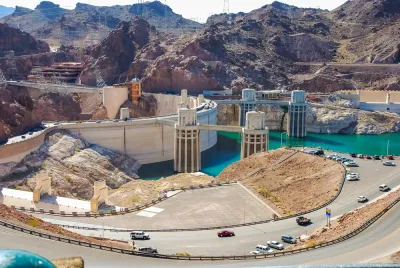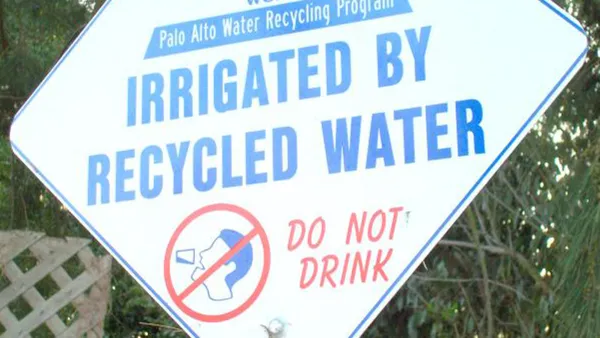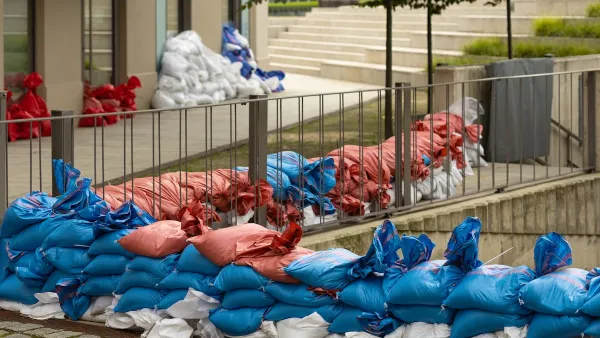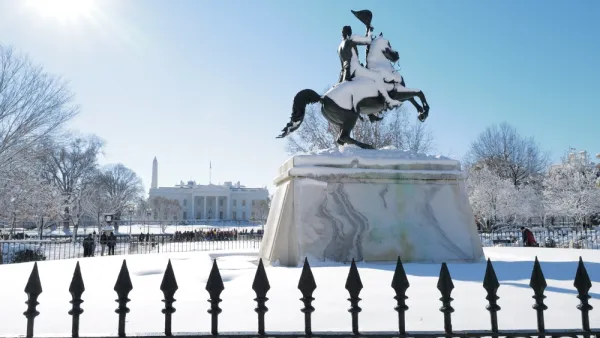In celebration of Water Week in the United States, as well as World Water Day, as celebrated by the United Nations, Brookings has complied a list of ten facts about water policy and infrastructure.

"From the water safety crisis in Flint, Michigan to the near-disaster with the Oroville Dam in California, a string of water-related events have made headlines, and called into question the U.S. focus on keeping critical water systems safe and functioning," according to a post by Alison Burke. So it's fortuitous timing that Water Week has arrived in the United States, and that today is the United Nation's World Water Day.
The post collects the Brookings team's research on the matters of water, so the article opens the floodgates, so to speak, to a lot more reading. Here are the ten facts as listed, with the relevant studies, research, and details available after the jump:
- Water plays a critical role in the economy.
- The federal government only accounts for a small share of total public spending on water infrastructure.
- Geographic and political boundaries can pose challenges to water investment
- The cost of water is on the rise in many cities.
- There's a mismatch between water investment demand and institutional capacity.
- Only a handful of drinking water utilities in the largest cities nationally rank highly in water investment
- The private sector owns most of the nation's dams.
- 69 percent of the nation's dams were built before 1970.
- Climate change and water cycles are closely linked.
- Despite concerns over water safety and infrastructure, Americans have greater access to clean water than most people around the globe.
FULL STORY: 10 facts about water policy and infrastructure in the US

National Parks Layoffs Will Cause Communities to Lose Billions
Thousands of essential park workers were laid off this week, just before the busy spring break season.

Retro-silient?: America’s First “Eco-burb,” The Woodlands Turns 50
A master-planned community north of Houston offers lessons on green infrastructure and resilient design, but falls short of its founder’s lofty affordability and walkability goals.

Delivering for America Plan Will Downgrade Mail Service in at Least 49.5 Percent of Zip Codes
Republican and Democrat lawmakers criticize the plan for its disproportionate negative impact on rural communities.

Test News Post 1
This is a summary

Test News Headline 46
Test for the image on the front page.

Balancing Bombs and Butterflies: How the National Guard Protects a Rare Species
The National Guard at Fort Indiantown Gap uses GIS technology and land management strategies to balance military training with conservation efforts, ensuring the survival of the rare eastern regal fritillary butterfly.
Urban Design for Planners 1: Software Tools
This six-course series explores essential urban design concepts using open source software and equips planners with the tools they need to participate fully in the urban design process.
Planning for Universal Design
Learn the tools for implementing Universal Design in planning regulations.
EMC Planning Group, Inc.
Planetizen
Planetizen
Mpact (formerly Rail~Volution)
Great Falls Development Authority, Inc.
HUDs Office of Policy Development and Research
NYU Wagner Graduate School of Public Service





























